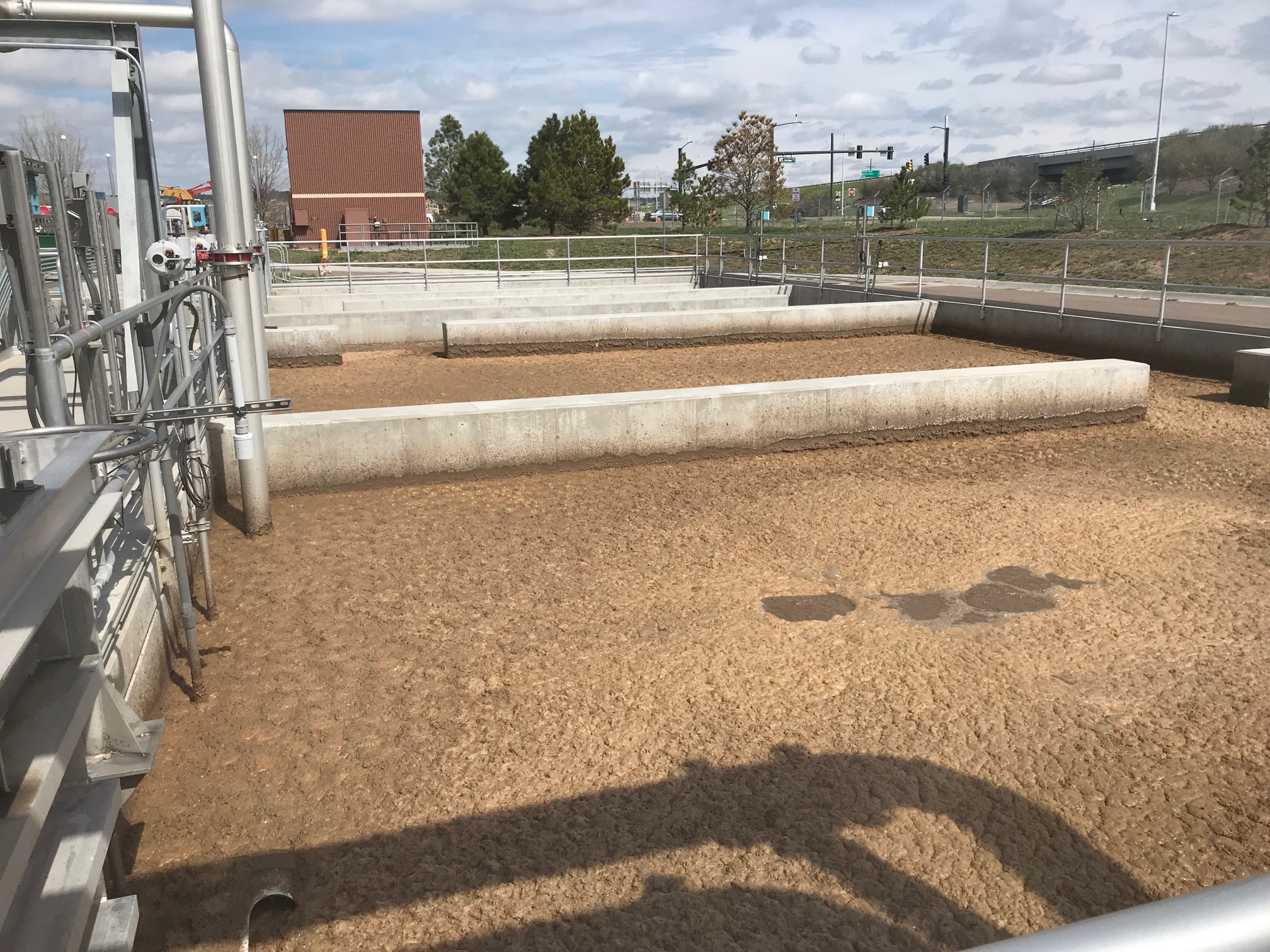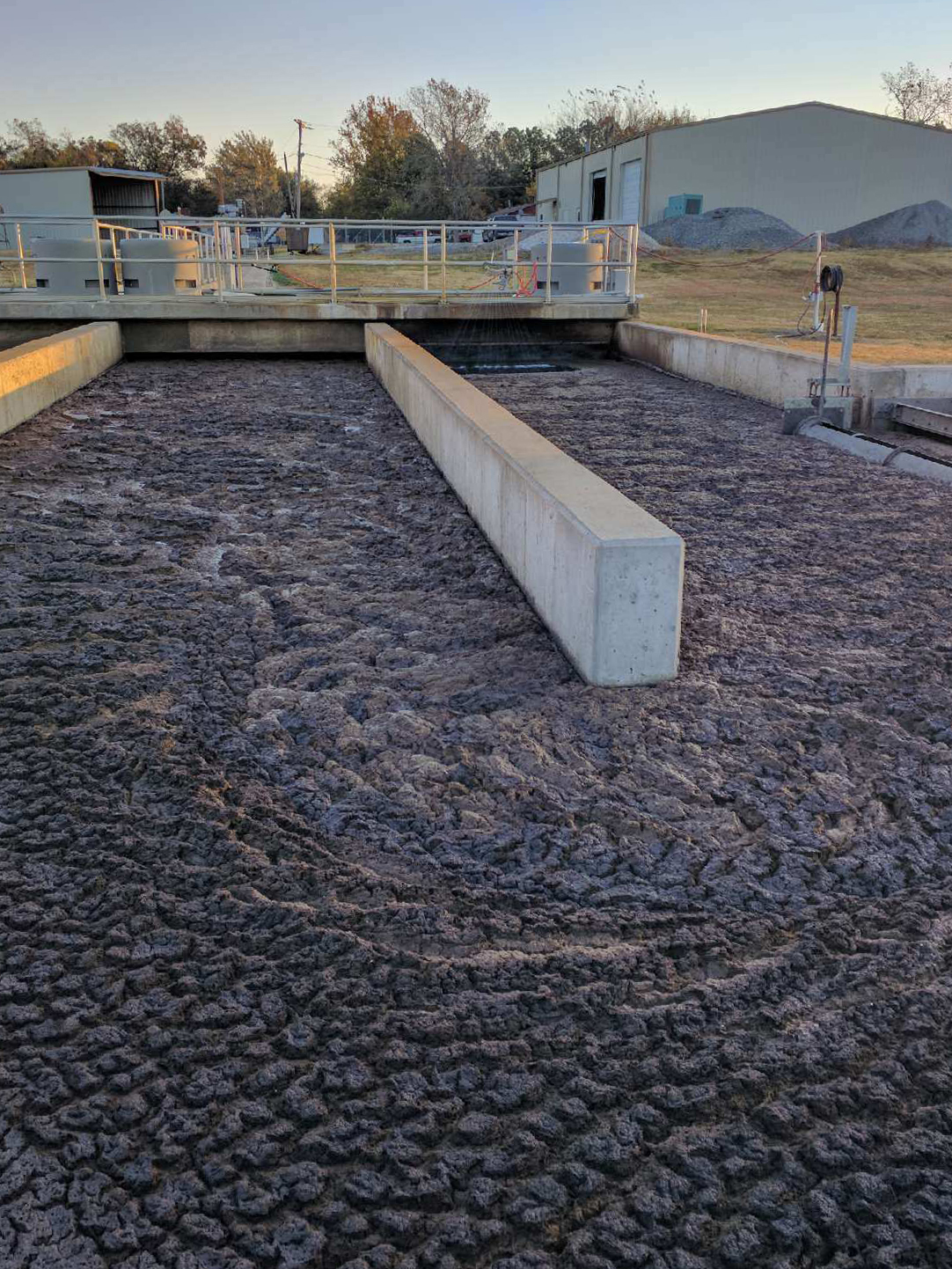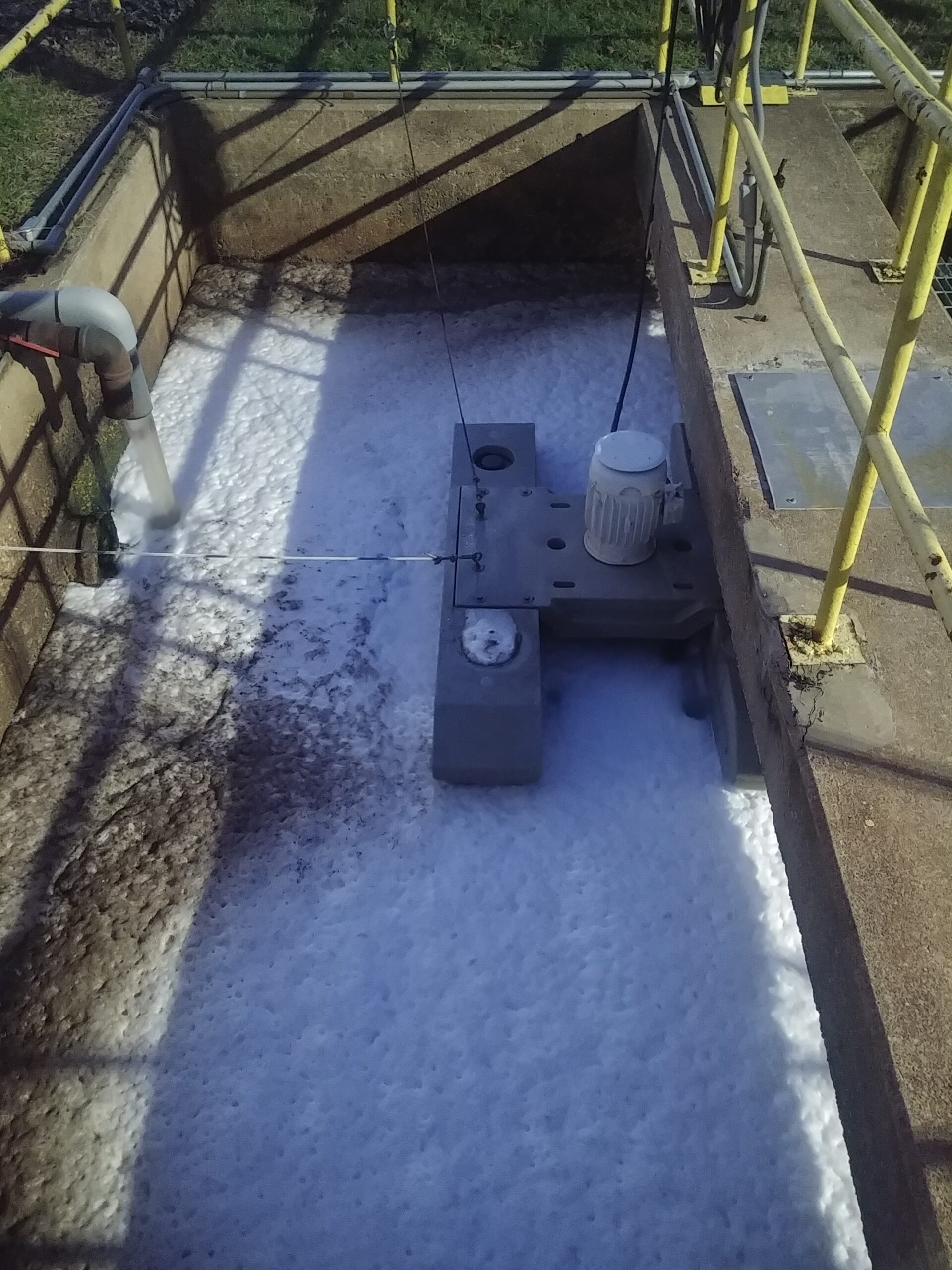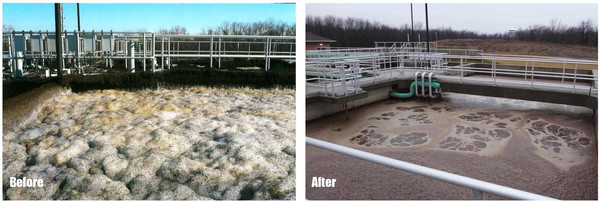Wastewater Treatment
Filaments & Foaming
What Are Foaming Filaments?
Three hard-to-treat foaming filaments are the main cause of excessive foaming in wastewater plants (WWTPs). Filaments usually develop when there is low F:M ratios, excess fats and oils, and cold temperatures, and cause bulking and foaming problems in treatment plants.
Our solutions work on correcting the root cause of the issue, by creating conditions that allow flocc forming bacteria to thrive, and filamentous bacteria to die. Most filamentous problems can be resolved by using a combination of SELECT-Grease® and SELECT-Defoam-bac®.
For foaming caused by surfactants, SELECT-Antifoam® is a non-silicon, oil based defoamer, designed to be used in wastewater treatment systems. This cane be used in conjunction with SELECT-Surfactant®, a bio-enzyme blend to breakdown surfactants and emulsions as they enter the treatment plant.
Products
Industry leading solutions
for good water quality
SELECT-Defoam-bac®
SELECT-Defoam-bac®
SELECT-Defoam-bac®, our best foam-fighting technology, is a blend of specialized proteins, free amino acids, and micronutrients which stimulate the floc-forming bacteria to degrade grease, emulsions, and petroleum hydrocarbon-based products and enable the bacteria to outcompete the filaments which cause foaming. Foaming filaments like Nocardia, Gordonia amare, and Microthrix parvicella use the fat, oil, and grease as well as their fatty acid by-products to produce a buoyant fatty cell wall. SELECT-Defoam-bac® provides the naturally occurring bacteria a chance to compete.
Use with SELECT-Grease® for best results.
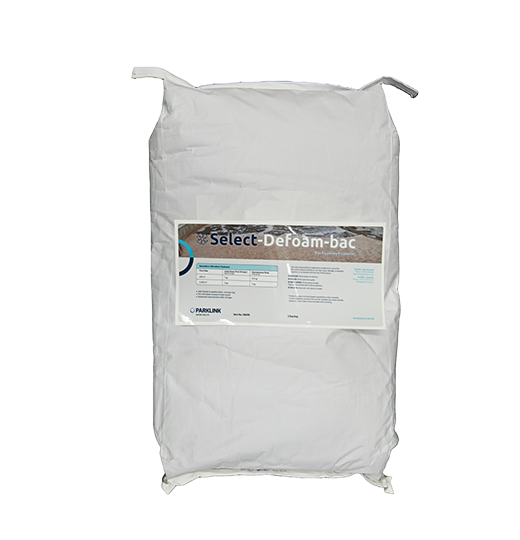
The Science Behind It
The Science Behind It
SELECT-Defoam-bac® is effective in the oxidation ditches, activated sludge plants, SBRs, extended aeration waste water treatment plants, and aerobic digestors. All these areas can be infiltrated by Foam-causing, F.O.G.-hungry filaments like Microthrix Parvicella, Nocardia, and Type 1863. Foam Buster also works well on the bulking filaments Type 021N and Type 0092.
SELECT-Defoam-bac’s® control of these filaments can be supported by heavy wasting programs and SELECT-Grease®, a biocatalyst that specifically attacks the fats, oil, grease, and fatty acids that filaments use for food.
Even More Than an Energy Drink
Most bacteria in wastewater plants are unmotivated and listless. Part of SELECT-Defoam-bac’s® micronutrient blend is formulated to give the filament-degrading bacteria extra boosts of energy that allow them to degrade the filaments faster than they can reproduce and get rid of the foam. As the graph shows, SELECT-Defoam-bac® allows wastewater bacteria to degrade filaments while contributing a much lower amount of their own energy.
But SELECT-Defoam-bac® supports filament degradation in more ways than energy. Its formula also contains nutrients specifically needed by the bacteria to create certain foam-busting biocatalysts. A bacon grease molecule is different from a butter molecule is different from a filament molecule, and SELECT-Defoam-bac® provides the right array of micronutrient ingredients to allow the bacteria to produce the specialized recipes for biocatalysts to attack these different molecules.
Settling Issues Solved
SELECT-Defoam-bac® also contains minerals, surface-tension depressants, and natural buffering systems, all of which work together to rid your plant of surfactant and emulsion chemistries as well as F.O.G. and fatty acids.
Not a Band-Aid
A lot of times when a wastewater plant gets foam they will use a chemical defoamer or an anti-foam to knock the foam down. Chemical defoamers work by covering up the problem for a period of time. In addition chemical defoamers can cause sludge bulking issues, nitrifier toxicity, and are limited in that they do not control Nocardia or surfactant foams. Silicone anti-foams break down into siloxanes which corrode combustion engines. Neither type of product truly addresses the root cause of the problem.
SELECT-Defoam-bac® addresses the cause of the foam and provides bacteria with the tools they need to digest and break it up. And because you never know when an influx of grease or surfactants can hit, SELECT-Defoam-bac® has a maintenance dose to keep your bacteria crisis-ready and we offer SELECT-Antifoam®, which is an organic defoamer that is easy on the biology and functions as a fast-acting temporary fix. For especially tough issues, use the synergistic combination of SELECT-Defoam-bac® and SELECT-Grease®. SELECT-Grease® helps to get the grease under control while Foam Buster alters the bacteria populations so the foam will not return.
Case Studies
SELECT-Defoam-bac® Case Studies
Nocardia Foam
Challenge
A wastewater treatment plant had an extensive foaming issue caused by the Nocardia filament. All the aeration basins were completely covered, and the foam even found its way into the center walls of the clarifier.
5,000 m3 per day Activated Sludge Municipal Treatment Plant Incoming BOD: 140-160 ppm Incoming Ammonia: 15-20 ppm
Solution
The operators began applying SELECT-Defoam-bac® and SELECT-Grease® to improve the cold weather degradation of surfactants, grease, and long-chain fatty acids, all which are nutrients for Nocardia.
Results
By the 30th day of the application, the foam cleared up to 75%. The operators continued a maintenance application to fully clear the plant. By fully degrading the grease and fatty acids, more ammonia and nitrogen was consumed, thus stabilising the ammonia spikes.
Oxidation Ditch
Challenge
A wastewater plant had a flow rate of 13,600 m3 per day. During the winter months they routinely encountered problems with foam.
Solution
They began adding 9 kg of SELECT-Defoam-bac® per day.
Results
3 weeks later: The foam was gone.
SBR
Challenge
A customer had a SBR system that was having an ongoing issue with Microthrix Parvicella. It was causing bad foaming, poor settling, and a cloudy effluent. This plant was out of compliance and needed immediate help. Their flow rate was 400 m3 per day.
Solution
They added 4.5 kg of SELECT-Defoam-bac® and 1 L of SELECT-Grease® per day for 7 days.
Results
7 days later: Grease was cut in half and settling had improved. 21 days later: The foam was gone and the plant was in compliance with the tight limits.
Brewery
Challenge
A brewery had a yeast outbreak and it caused bad foaming, poor settling, and bad effluent..
Solution
Add 1 – 2 kg of SELECT-Defoam-bac® to help with the foam and add 4.5 L of SELECT-Protein® to improve settling.
Results
After experimenting with the dosage rate we were able to come up with the perfect solution. Just one day after adding SELECT-Protein® the plant settled perfectly and the customer was ecstatic.
Downloads
SELECT-Grease®
SELECT-Grease®
SELECT-Grease® is an excellent product for grease control in sequencing batch reactors (SBR), other wastewater treatment plants, equalisation tanks, and food and egg processing plants.
When used with SELECT-Defoam-bac®, it helps eliminate problematic filamentous bacteria causing foaming and bulking.
This is not a bacterial product, but rather a high tech biocatalyst. This means that SELECT-Grease® incorporates three types of lipid degrading biocatalysts to provide dramatic hydrolysis of fat, oil, grease (FOG) and resulting fatty acids. SELECT-Grease® will degrade the FOG, and your bacteria will eat it.
SELECT-Grease® can degrade a range of fatty acids such as oleic, steric, palmitic as well as fish oils, triglycerides, milk, and animal fats. No more grease, no more foam, and no more backups.
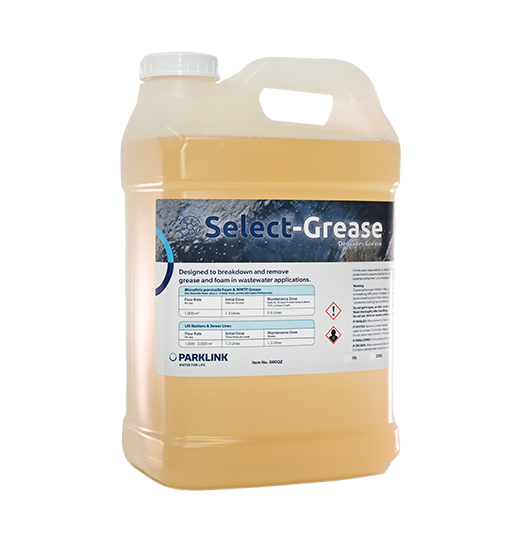
The Science Behind It
Why is it so important to control fats, oils and grease?
In the winter months, when water temperatures are colder, the naturally occurring bacteria cannot completely break down FOG and the fatty acids that build up in the wastewater plant. These fatty acids are then taken up by filaments like Microthrix Parvicella and Nocardia which allows them to float and foam. SELECT-Grease® breaks up these fatty acids and cuts off the filament’s food source. It’s fascinating science for wastewater operators.
SELECT-Grease® works well with SELECT-Defoam-bac® and is used in all types of municipal and industrial applications. SELECT-Defoam-bac® alters the bacteria populations so the foam will not return while SELECT-Grease® helps to get the grease under control.
This product is either metered or poured into the front end of the wastewater process.
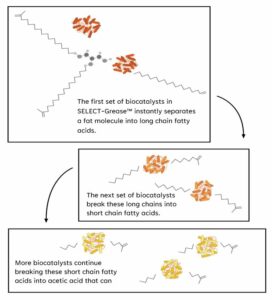
SELECT-Grease® Applications
- Collection Systems and Lift Stations
- Sequencing Batch Reactors (SBRs)
- Municipal Plants
- Egg Processing Plant
SELECT-Grease® Benefits
- Reacts quickly
- Degrades fat, oil, and grease (FOG)
- Prevents foaming
- Cleans plants
- Easy to use
Case Studies
Manufacturer of Luxury Soaps Controls Fatty Acid Foaming
Challenge
High Lauric and Stearic Fatty Acids
Solution
SELECT-Grease®, SELECT-Surfactants®
Results
An organic chemical manufacturer contacted us about foam being generated in their treatment system. They use a series of two ponds, with high aeration in the first lagoon to pretreat their waste stream before sending it to the municipal wastewater treatment plant. The waste stream has high concentrations of lauric and stearic acids which contribute to influent BOD 600 ppm, and COD 200 ppm. The system was not achieving complete breakdown of these fatty acids as the waste stream moved quickly through the system. The operator began using SELECT-Surfactants® to add new bacteria cultures which break-down of fatty acids. This improvement was enough to make the customer happy, but we thought that adding our SELECT-Grease®, liquid biocatalyst product, would help break down the fatty acids even more quickly. The biocatalyst accelerated the process, a huge benefit in this waste stream with a short detention time. The combination of biocatalyst and bacteria brought the systems effluent waste stream down to BOD 8.1 ppm, and COD .4 ppm.
Municipal WWTP and Local Industry
System
Activated Sludge
Flow Rate
550 m3 per day
Background
The municipality upgraded their wastewater plant three years ago with fine bubble aeration. Immediately they began noticing a foot of foam on the basins and persistently higher effluent ammonia numbers. They traced the foaming issue down to a tannery in town. The tannery has an existing wastewater process of their own consisting of an equalization tank followed by aeration and a very simple DAF unit. To clean the fat, oil and grease off hides the tannery uses surfactants, substances similar to soap in their make-up. We learned the cause of the issue in the municipal plant was that surfactants were passing through the tannery system undigested, and then foaming when they hit the fine bubble diffusers at the municipal system. The tannery experimented with a number of surfactants to help stop the foaming, but to no avail.
Solution
The solution was to breakdown the surfactants at the tannery’s treatment plant. We had them increase the holding time in their EQ tank to create anoxic conditions and then they added SELECT-Grease® and SELECT-Protein® to speed the breakdown the grease and long chain fatty acids. The process was further enhanced by adding SELECT-Defoam-bac® to the aeration tank. SELECT-Defoam-bac®’s micronutrient blend boosts the ability of native bacteria to degrade fatty acids and grease. The biocatalysts kicked off the surfactant degradation process, and native bacteria with the help of SELECT-Defoam-bac® finished the process. Immediately, the city noticed 95% less foam and better settling. As the foam went away they also realized that the surfactants had been knocking out their nitrifiers. As the surfactants were no longer hitting them as they had before, nitrification improved and their effluent ammonia dropped. Now both the municipality and tannery are happy.
Sequencing batch reactor (SBR)
Challenge
A customer had a SBR system that was having an ongoing issue with Microthrix Parvicella. It was causing bad foaming, poor settling, and a cloudy effluent. This plant was out of compliance and needed immediate help. Their flow rate was 450 m3 per day.
Solution
They added 4.5 kg. of SELECT-Defoam-bac® and 1 L of SELECT-Grease® per day for 7 days.
Results
7 days later: Grease was cut in half and settling had improved. 21 days later: The foam was gone and the plant was in compliance with the tight limits.
Food Processor
System
Trickling Filter>DAF> Aeration Basin
Flow Rate
900 m3 per day
Challenge
Malfunctioning DAF-caused foaming in Aeration
Background
To achieve their effluent goals, this processor must incorporate two pre-treatment steps before the waste stream gets to their aeration basin. First a trickling filter takes the BOD from around 4000 ppm to 1000 ppm. Next a Dissolved Air Floatation (DAF) unit removes all the grease that the trickling filter didn’t remove. Trickling filters are notorious for allowing grease to pass right through them. They system generally worked pretty well but was dependent on the DAF making up for the shortcomings of the trickling filter. However, one day a mechanical issue resulted in the DAF being taken offline, and the timeline for getting the replacement part was unknown. With only the trickling filter for pre-treatment, and no other way to remove the fats, oils, and grease (FOG) they soon began foaming.
Solution
This customer started with our fatty acids analysis to determine what the concentrations of FOG were, and which fatty acids it consisted of.
Fatty Acid Testing revealed especially high amounts of Palmitic, Stearic, and Oleic acid. Also typically the highest concentration Fatty Acids in municipal influent.
Since the loss of the DAF, total fatty acids in aeration had now jumped up to 7551.5 ppm. The fastest way to reduce the foam was to accelerate the degradation of the very high FOG in the basin. The most prevalent long chain fatty acids are also typically slow to degrade molecules in an aerobic system. The operator used SELECT-Grease® at a rate of 2 L per day, combined with our bacteria blend. The biocatalysts in SELECT-Grease® act on specific structures in the FOG, which allows bacteria in the system to quickly degrade the FOG molecule. Within 30 days the foam had disappeared, despite the DAF unit still not being brought back online.
Downloads
SELECT-Antifoam®
SELECT-Antifoam®
SELECT-Antifoam® is specifically formulated for use in wastewater treatment plants. It works by creating a monomolecular film across the surface of foaming basins that reduces the surface tension of the foam, knocking it down. Unlike silicone-based industrial defoamers, SELECT-Antifoam® won’t disrupt bacterial floc and works at low dose rates.

The Science Behind It
No Silicone Needed!
SELECT-Antifoam® is a highly effective and concentrated anti-foam solution formulated specifically for use in aerobic and anaerobic wastewater treatment processes. Silicone anti-foams break down into siloxanes, which dismantle the biomass. SELECT-Antifoam® knocks down foam, while being safe for biological processes, as it contains zero emulsifiers or silicons and won’t harm bacterial life or interfere with settling as it breaks down your toughest foam. The all natural essential oils blended in give the product a sweet aroma and longer lasting abilities compared to chemical and silicone defoamers.
Using SELECT-Antifoam® on Microthrix Parvicella? Couple it with SELECT-Defoam-bac® or SELECT-Grease® for maximum impact. These two take-no-prisoner formulas digest grease and cut off its food source.
Silicone Defoamer
- Generally 10% active
- Contains emulsions, which disperse biological floc
- Rapidly knocks down foam
- Lasts for 30 minutes to 2 hours
SELECT-Antifoam®
- 100% active
- No emulsions
- Knocks down foam at a slightly slower rate
- Lasts for 6 to 8 hours
SELECT-Antifoam® Applications
- Dairy
- Food Processing
- Municipal
- Refineries
- Manure Pits
SELECT-Antifoam® Benefits
- Tough on Microthrix Parvicella
- Works at low dose rates
- Contains zero emulsifiers or silicons
- Long-lasting
- Ultra-concentrated
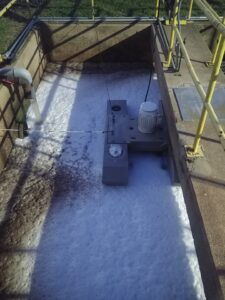

Downloads
SELECT-Surfactant®
SELECT-Surfactant®
Wash your hands of surfactants once and for all with SELECT-Surfactant®
We selected the highly specialized pseudomonas bacteria cultures in this blend for their ability to degrade surfactants and emulsions.
An excellent product for industrial or municipal wastewater plants that receive heavy amounts of surfactants or emulsions that can affect settling and foam. SELECT-Surfactant® reduces recovery time from upsets in plants while the bacteria and micronutrients slow sludge production and reducing foam.
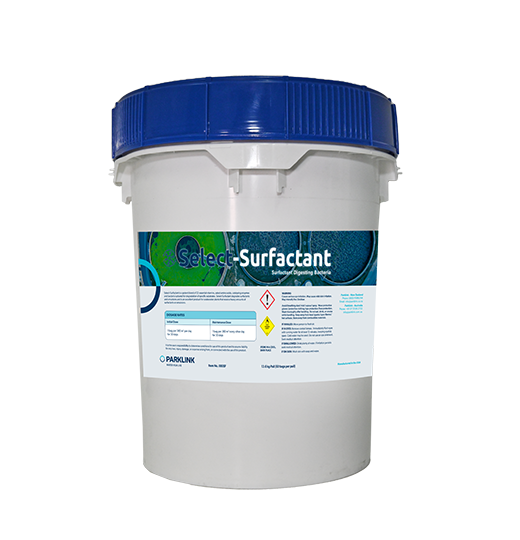
The Science Behind It
The Science Behind Surfactants
Surfactants can be known as NPE’s (Nonyphenol Ethoxylates) to chemists. Surfactants are soaps and cleaners. Almost all surfactants are made from grease in some way. Often industries discharge wastewater containing high levels of surfactants which end up at the treatment plant. We selected the highly specialized pseudomonas bacteria cultures in this blend for their ability to degrade surfactants and emulsions.
SELECT-Surfactant® is a 5x blend and an excellent product for industrial or municipal wastewater plants that receives heavy amounts of surfactants or emulsions that can affect settling and foam.
Surfactants cause foaming, cloudy effluent, and shut down nitrification.
Surfactants can be slow and difficult to break down. This speeds up the process of degrading surfactant molecules. This product can be added as soon as foam and turbidity are noticed, and the sooner you start treatment, the faster the results.
SELECT-Surfactant® Benefits
- Creates a healthier biomass under toxic conditions
- Prevents foaming and bulking
- Increases cell metabolism
- Provides better BOD removal
- Provides fast recovery from high loadings
- Improves settling
- Reduces sludge production
- Easier plant operations
SELECT-Surfactant® Applications
- Industrial Wastewater Plants
- Municipal Wastewater Plants
Downloads
Common Filaments and their Causes
Common Filaments and their Causes
The Problem Bacteria:
Nocardia is caused by excess grease, long MCRTs (mean cell residence times) and increases in temperature. [gram (+) bacteria]
Microthrix Parvicella is caused by excess animal and vegetable greases and oils. It prefers low F:M and colder temperatures. [gram (+) bacteria]
Type 1863 is caused by excess greases and fats, low F:M, and a decline in aeration basin pH. [gram (-) bacteria. It will show up under microscope as a pink dashed line.]
If you’re having trouble determining the type of bacteria in your system, we offer our consulting expertise. We can identify the bacteria or we can train your personnel in the identification process.
To treat foaming from these three bacteria, we recommend using SELECT-Defoam-bac™ and SELECT-Grease™ – two extremely powerful formulas to digest the available grease and cut off the food source. Usage requirements are system-dependent.

